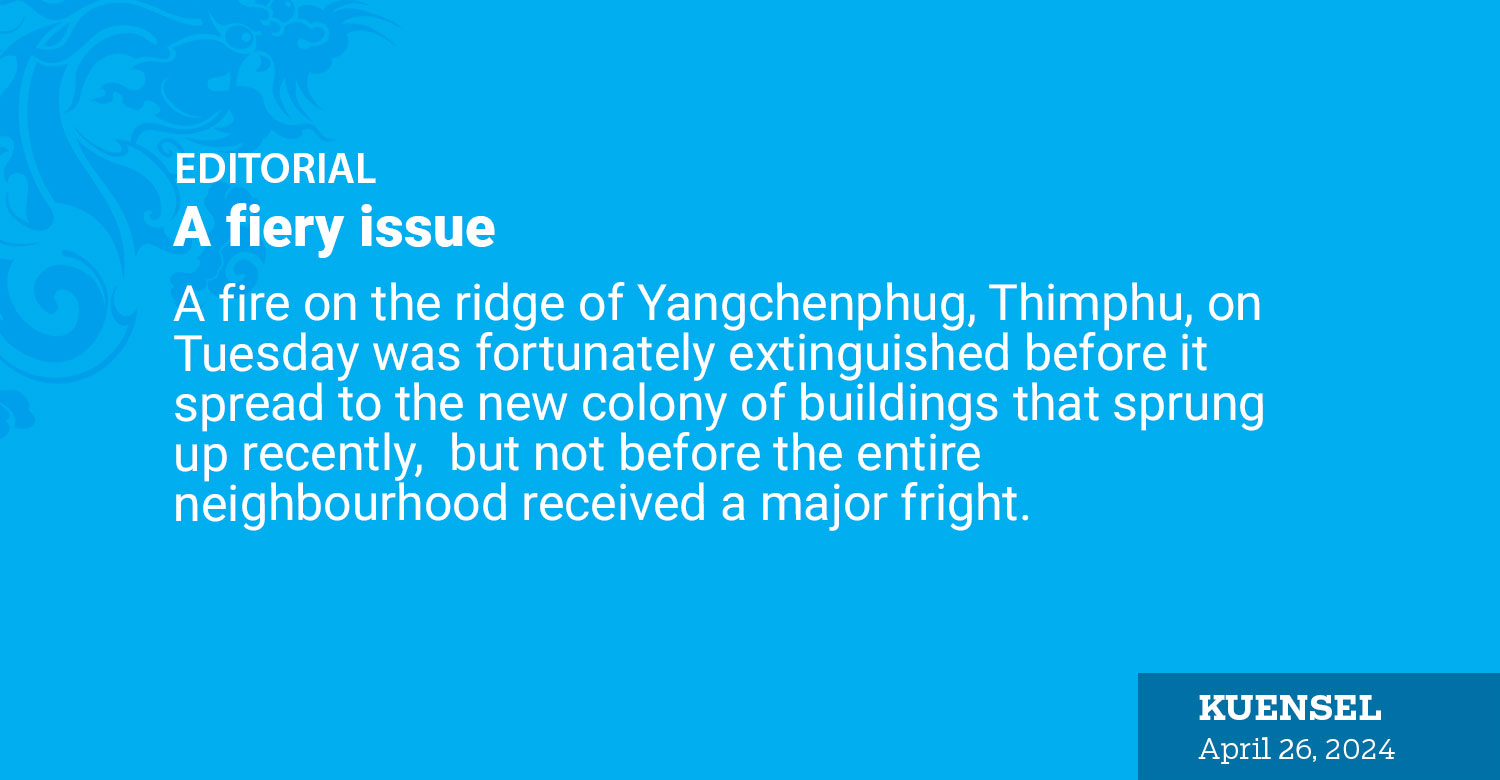A fire on the ridge of Yangchenphug, Thimphu, on Tuesday was fortunately extinguished before it spread to the new colony of buildings that sprung up recently, but not before the entire neighbourhood received a major fright.
Given the cramped structures located near a pine forest with thick undergrowth, the damage could have been far worse. Fortunately, the fire was put off before it caused major damages. The first response team and the volunteers managed to contain it to the relief of many watching or recording it on their mobile phones.
But this is of little comfort. There is a fire in the same area nearly every year. The area has become congested in the last few years, as the limited private land on the hillside are sold or bought to accommodate the growing capital city’s population, many of whom are trying to settle down in the city permanently.
Even as volunteers were fighting the fire, there was another in Paro, which was worse and threatened villagers and their belongings. Both were contained saving lives and property. Another fire at Samarzingkha, Thimphu, yesterday was quickly brought under control.
While relevant authorities are investigating the cause of the fires, what we know is that fire, forest or others, are usually caused by the same predictable factors like poor electrification, burning of debris or out of carelessness of people.
The Yangchenphug fire was apparently caused by a tree falling on electric lines. Snapping electric lines, short circuits and faulty lines are one of the many causes of fire in Bhutan. The tall pine trees at Yangchenphug must have been a natural wind shield for the congested settlement, but it also had been a risk. If the thickets were or trees close to high voltage electric lines were cleared, it could have prevented the scare.
It is the windy season in Bhutan, making us prone to fire. Fanned by strong spring winds, a fire could cause havoc to the natural environment if not cause tragedies. However, despite the repeated warnings, we seem to be able to do nothing about the obvious risks. Meanwhile, our unsafe neighbourhoods continue to grow both in rural Bhutan from abandoning villages or crowding or overwhelming towns and cities.
While we welcome warmer spring, the risk of fires is greatly enhanced, given the dry air and the winds that sweep through the valley. Quite often we tend to forget the risk after the event. It is time to translate this preventive approach, at the policy level, into actions. Given today’s trend the threat to towns could be more destructive. The fire at Yangchenphug was a forest fire in an urban setting.
Every winter and spring, Bhutan is devastated by numerus fire incidents that destroy thousands of forest land and resources. Many get the attention. Some only do when the damages are costly- to lives or properties. We still need awareness, if not common sense, to save lives and properties.


